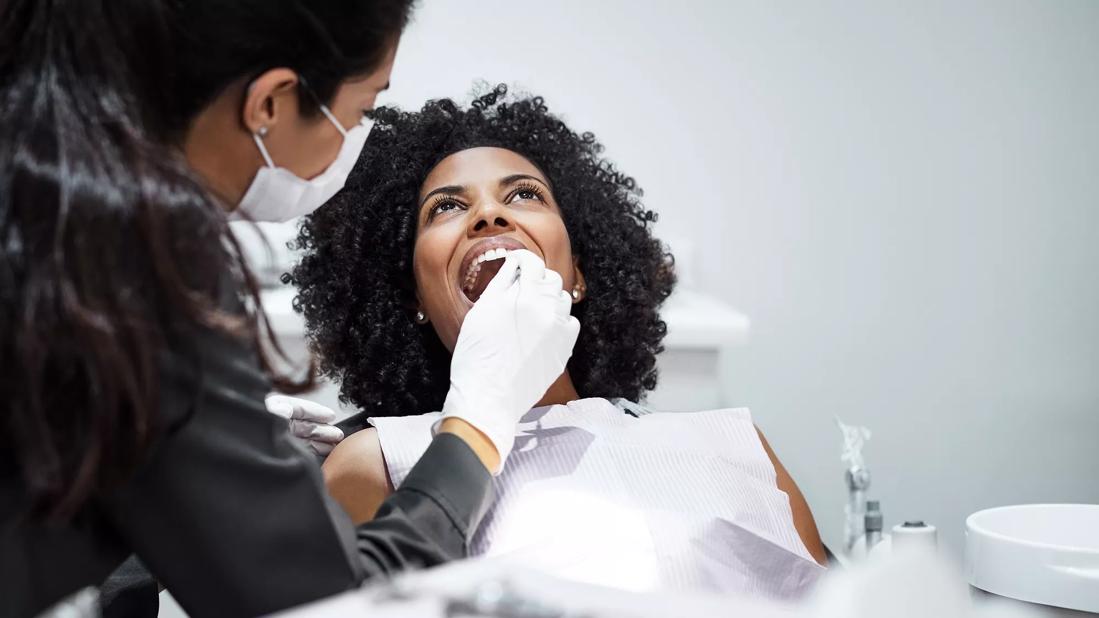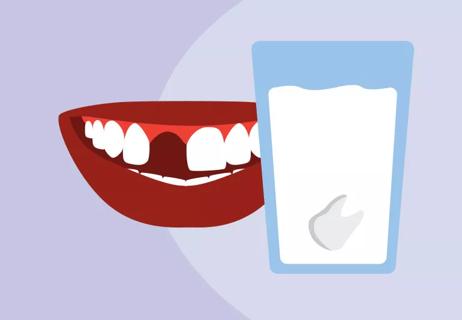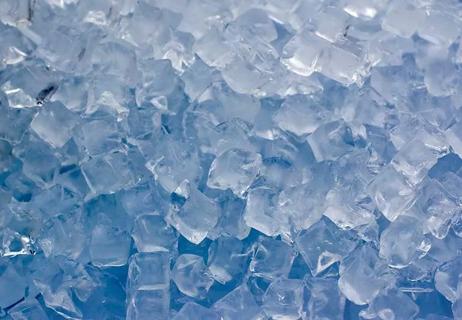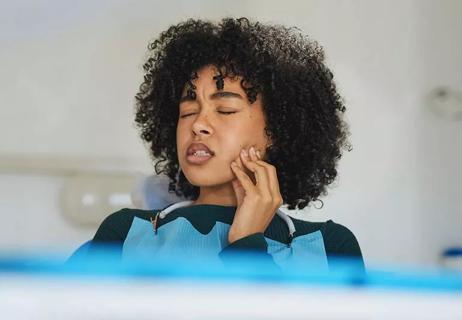Keep the nail file out of your mouth and leave any tooth shaving up to your dentist

Sometimes, you stumble on a video so mind-numbingly curious and fascinating that, even as you fight to scroll away or ignore whatever it is you just watched, it makes you think, I’ve gotta try that myself.
Advertisement
Cleveland Clinic is a non-profit academic medical center. Advertising on our site helps support our mission. We do not endorse non-Cleveland Clinic products or services. Policy
But dentist Anne Clemons, DMD, implores that if you ever come across the DIY teeth shaving trend, it’s something that no one should ever try to do themselves at home — ever.
“When you’re changing a tooth by yourself, you’re doing permanent damage,” warns Dr. Clemons. “You’re changing that tooth permanently and there’s nothing we can do to bring that tooth back to where it was.”
Dr. Clemons explains how teeth shaving works in a clinical setting, who should consider it and what kind of damage you can actually cause when you take it even just a little bit too far.
Teeth shaving, teeth reshaping and teeth contouring are all different names for the same dental procedure known as enameloplasty (or odontoplasty). During this procedure, a general dentist or orthodontist will reshape a tooth. When they do this, they try their best to remove as little enamel as possible — the hard, protective barrier of your tooth — from select areas on your tooth’s surface as they shave it down.
This procedure is done under controlled conditions with highly specialized tools and magnified lenses. So, practitioners aren’t just eyeballing the situation and trimming it down where it looks aesthetically pleasing.
Advertisement
“We’ll look at a number of things, and one of the biggest things we look for clinically and with the help of X-rays is how much tooth structure we do have and what else has happened to the tooth because we really want to be conservative,” clarifies Dr. Clemons.
“The amount of enamel varies from tooth to tooth in terms of how thick it is in different parts, but the really important thing to know is that it will never come back. So, once it’s gone, it’s gone.”
Dentists will shave teeth for a variety of reasons, including:
“We’re looking at the spacing, crowding, the balance of the teeth and where the teeth need to go,” says Dr. Clemons. “If there’s a discrepancy between the size of the top teeth and bottom teeth for example, we can change that relationship by shaving teeth as part of an orthodontic treatment. We can also do what’s called an interproximal reduction, where we’re taking off tooth structure from in between the teeth to make teeth more narrow for floss to fit in those hard-to-reach areas.”
Minimal adjustment can also be made for purely aesthetic reasons if, for example, something is bothering you about the way a tooth is rotated or oriented — as long as it can be done without having an impact on the tooth overall.
The DIY tooth shaving trend has taken off on TikTok in recent months. Several videos have popped up with online influencers revealing brand-new, near-perfect, gleaming white smiles after shaving down all of their teeth into pointy nubs. They file down their teeth using a nail file, metal strips and other materials. Many then highlight their decision to do so as one way to provoke dental providers into replacing their original teeth with what they’re incorrectly passing off as veneers.
Veneers are coverings that stick to the front of an existing, healthy tooth. Like a coat of paint that covers a small crack in a wall, veneers are a cosmetic solution that conceal a wide range of conditions like cracks, chips, discoloration or gaps.
In the viral videos that show the after-effects and treatments for DIY tooth shaving, it’s clear that a majority of those who are doing it are, in fact, getting dental crowns that cap over the teeth they’ve shaved to mere nubs. These crown procedures are not only more expensive, but they also run their own set of risks when the tooth underneath is shaved down to its pulp.
Advertisement
When you shave off your enamel, your dentin (the second layer of your teeth) is exposed. Dentin isn’t as strong as enamel, and it’s also sensitive to things like sugar and high or low temperatures.
“Not only does that make dentin more sensitive, but it’s also more vulnerable to things like cavities,” Dr. Clemons says. “If we don’t have enamel covering an area, that area is now forever going to be at a higher risk of getting cavities.”
And if you go even further and remove the dentin, you run the risk of causing irreversible damage to your tooth pulp, the center of your tooth that contains all the nerves, blood vessels and connective tissues that provide nutrients to your teeth. If that happens, Dr. Clemons says you really only have two options: Extract the tooth entirely or do a root canal by removing the unhealthy or dead pulp and preserving whatever outer structure of the tooth is left.
“When you have a root canal, often, you also need a crown to restore the outside contours of the tooth and make it stronger,” explains Dr. Clemons.
More than that — the damage to the pulp of your tooth may not be felt right away. So, you could get a crown placed on your tooth tomorrow and may not know you need a root canal until months or years from now when you start experiencing excruciating pain. Plus, crowns only last anywhere from five to 15 years depending on how they’re cared for. So, shaving your teeth on your own for any reason raises a lot more risks and long-term harm than any potential benefit.
Advertisement
“We have a lot of things we can do and pretty cool materials and technology to shave teeth, build teeth and restore teeth, but anything we do is never going to be as good as a natural tooth,” shares Dr. Clemons. “We do our best and we want it to look and feel like a tooth, but it’s always going to be a replacement that’s trying to be as good as it once was.”
Teeth shaving should only be done by trained dental providers in a professional, medical setting. If you’re having any concerns about your teeth, your dental health or how your smile looks, scheduling an appointment with a dental provider and maintaining that relationship could be really helpful.
In many cases, especially when teeth shaving is a cosmetic choice, the health of your teeth comes first because it will determine how much of your teeth can be preserved and whether or not you risk dealing with real long-term consequences.
“Your dentist would love to talk to you about your smile, how things work, how things feel and they should be able to offer you a lot of suggestions for how to make changes or make improvements,” encourages Dr. Clemons.
“The most important thing is to make sure that everything stays healthy either during these procedures or before any sort of aesthetic change happens. And if your teeth are not healthy, based on position and conditions of your teeth, there may be some treatments or procedures that are off the table and are not good options until the teeth are in a healthier state.”
Advertisement
Learn more about our editorial process.
Advertisement

At-home products like whitening toothpaste, rinses and strips can bring bright results

Help and encourage them to brush and floss regularly, limit sugary foods and get routine dental checkups

Act quickly to increase the chances that your tooth can be saved

You can do damage to fillings, crowns and even your teeth themselves

No, oil pulling and vitamin D won’t fill or fix a cavity

Cavities, grinding or even a sinus infection could be behind your tooth pain

How your teeth and gums can alert dentists to other health problems

This oral health practice doesn’t have proven benefits, and it’s not a substitute for brushing and flossing

Babies can get congested easily, but you can calm their cough by keeping them hydrated, using nasal drops and running a humidifier

Weight loss may cause loose, sagging skin and muscle loss to your rear

Several conditions, like vitiligo and fungal infection, can cause a loss of pigmentation, leading to white spots or patches on your skin